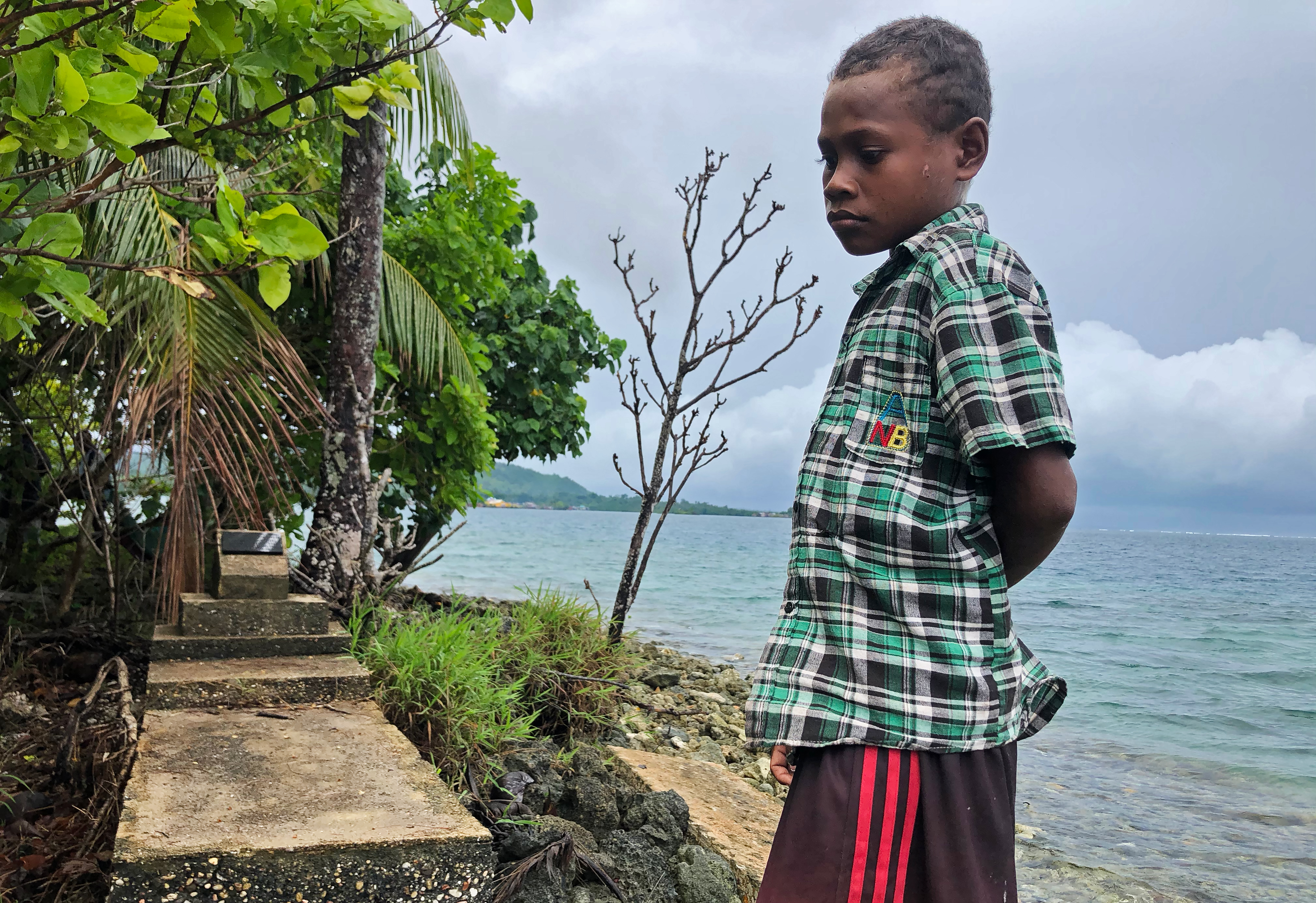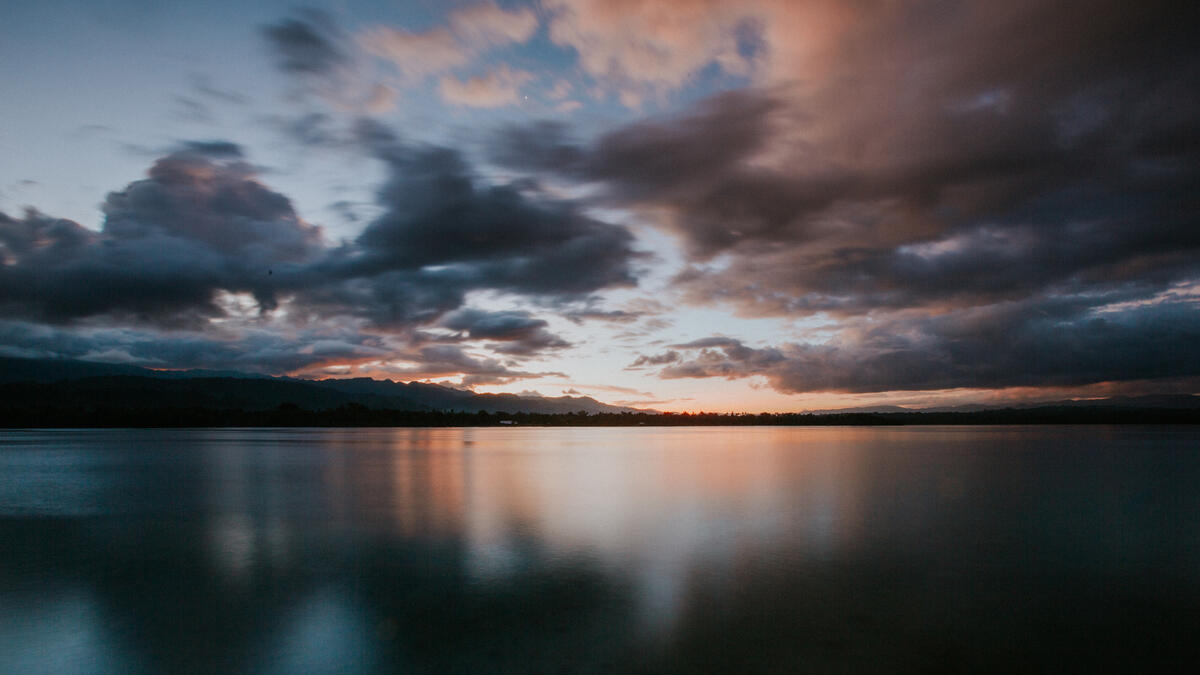
Create fewer carbon emissions
- Walk instead of driving when possible.
- Shop local.
- Switch off at night.


How Pacific Islanders are seeing their homes disappear
We’ve heard about the huge problems children are facing in areas of water scarcity; the long walks to collect dirty water, waterborne diseases, missed schooling… but there’s another side to the climate change coin. In some communities too much water, caused by rising sea levels is threatening livelihoods, homes – and whole towns.
Here, World Vision’s Kirsten Nainoca shares the experience of her home nation, Fiji.
Imagine having to leave your home. Having to start again. Through no choice of your own.
Picture a boy on an idyllic island. We’ll name him Tomasi. He stands with his family, looking back at their home. Once full of life, filled with pictures of his great-grandparents and the smell of his mother’s cooking, it’s now just an empty wooden house with nothing but memories of the past.
‘Remember this, one last time,’ he tells himself as they walk past the plantation his father, grandfather and great grandfather worked on for generations, the school he and his siblings attended and the fields he would play rugby on with his friends – all now empty, lifeless, almost unrecognisable.
Tomasi is not a boy I know – he is many people. Too many of my friends and family have lived that scene – leaving the places they grew-up or raised their families to escape the rising tides and start again.
Fiji is a very small country, but it’s one of the most affected by climate change. Populated by just under a million people, it has more than 300 islands. It’s a tropical paradise to many, but to me Fiji’s home. And it is paining my heart that my home is slowly disappearing.
Fijians, along with our neighbours in the Solomon Islands, Vanuatu and many others, are facing the harsh reality that they might not have a home – or even a country – one day.
Fiji has a Green Growth Plan in place and sees the need to better harness natural resources, reduce vulnerability to environmental risks and promote socially inclusive development.
As much as these small islands can do their part in helping combat climate change, we all have a role and are a part of this story.
The word Talanoa is a Fijian word for talk or discuss. We also use it in the context of telling stories. A strong form of communication for us back home, someone always has a story to tell, it’s the way we pass down traditions, have a casual chat or keep up to date with the latest news. It was a word used by United Nations Climate Change (UNCC) as Fiji was leading the conversation on climate change for the 2017 United Nations Climate Change Conference COP23.
So, what I’m going to ask you to do will cost you nothing. It’s a simple question:
How are you keeping the dialogue of climate change alive?
I started with 'Tomasi'’s story, but what will your story look like?
What choices do we have the freedom to make, that not only affect us, but can also affect people on the other side of the world – people fighting for their homes?
In efforts to continue the dialogue of climate change, let’s keep a lookout for Talanoa opportunities and be willing, not only to hear it but, most importantly, to share it.
I want to highlight that the conversation shouldn’t stop here, it continues as you talk with your children, your spouse, when you go for a coffee and even when you’re doing your grocery shopping.
Keep these stories alive.
Start by asking yourself these simple questions to start the dialogue of climate change:
Here are some simple steps to start your climate story:

